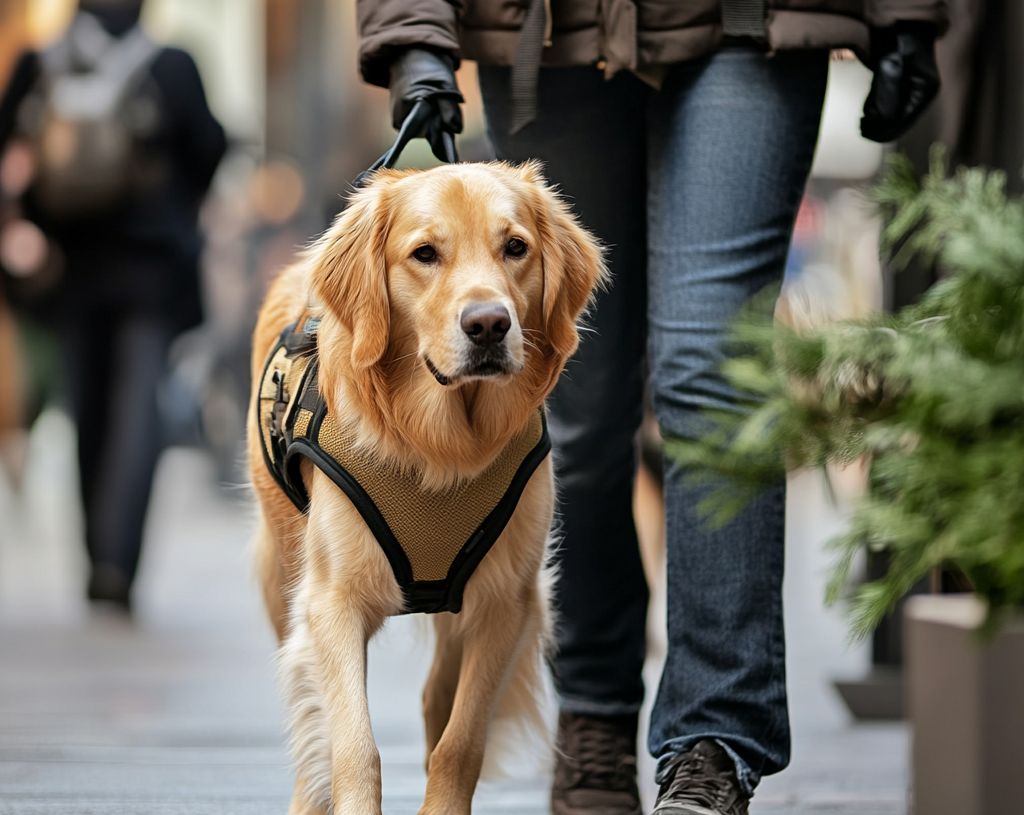Learn why it’s not okay to pet service dogs and understand the importance of respecting their work. Discover what you should do instead to ensure safety and respect for these incredible animals.
Why It’s Not OK to Pet Service Dogs (and What You Should Do Instead)
Service dogs play a vital role in assisting individuals with disabilities, offering physical, emotional, and mental support. While they are often friendly and approachable, it’s crucial to remember that these dogs are working animals with specific jobs to do. In this post, we will discuss why it’s not okay to pet service dogs and what you should do instead to show respect for their work.

Why It’s Not OK to Pet Service Dogs: Understanding Their Role
Service dogs are highly trained animals tasked with specific duties that help individuals navigate daily life. Whether they’re guiding someone with visual impairment, alerting a person with epilepsy about an impending seizure, or assisting someone with a mental health disorder, these dogs have an important role in maintaining their handler’s independence and safety.
The Training Behind Service Dogs
The first thing to understand is that service dogs undergo intensive training to perform specialized tasks. This training often lasts months or even years. Petting a service dog while it’s working can distract it from its tasks, potentially putting its handler in a dangerous situation. Service dogs must be focused, and distractions can compromise their ability to perform their duties effectively.
Service Dogs are Not Pets
While service dogs are often friendly, they are not pets. They are working animals with specific roles, and their primary responsibility is to assist their handlers. Approaching or petting a service dog disrupts their work and may cause them to become distracted, which can prevent them from performing tasks like alerting their handler to an emergency or guiding them safely.
What to Do Instead of Petting Service Dogs
If you encounter a service dog in public, it’s essential to be respectful and mindful of its role. Here are a few alternatives to consider instead of petting a service dog.
1. Respect the Handler’s Boundaries
The handler is in charge of the service dog and may choose to interact with others. If the handler seems open to conversation, it’s okay to ask questions, but always be respectful of their space and time. Avoid touching or speaking directly to the service dog without permission.
2. Ask for Permission Before Interaction
If you would like to pet a service dog, always ask the handler first. Some handlers may be comfortable with others interacting with their dogs, while others may not. It’s essential to respect the handler’s wishes and prioritize the needs of the service dog.
3. Focus on the Handler’s Needs
Service dogs are there to support the handler, so focus on supporting the individual. If the handler needs assistance or you feel you can help in some way, offer your help or just offer a smile. The goal is to make sure the handler and the service dog are able to continue their tasks without unnecessary interference.
Why It’s Important to Respect Service Dogs
Respecting service dogs ensures that they can continue to perform their critical duties without distractions. Here’s why it matters:
1. Safety
Service dogs are trained to keep their handlers safe. Disruptions or distractions can prevent the dog from staying focused, which can be dangerous in situations where quick reactions are needed. For example, a dog guiding someone with visual impairment must stay alert to ensure the handler doesn’t encounter obstacles.
2. Workplace Efficiency
Service dogs are integral to the daily lives of many individuals. When these dogs are distracted, their efficiency is compromised. This may cause delays, confusion, or even harm to the handler. Being respectful of a service dog’s work means respecting the handler’s independence and autonomy.
3. Building Awareness
By educating yourself and others about the importance of service dogs and respecting their space, you help create a more inclusive and understanding environment for people with disabilities. Raising awareness about the appropriate way to behave around service dogs fosters a culture of respect and kindness.
What Can You Do If You See a Service Dog?
It can be tempting to approach a service dog, but understanding the right way to behave is crucial. Here are some dos and don’ts:
Do:
- Be aware: Keep a safe distance from service dogs.
- Respect: Understand that they are working and should not be distracted.
- Ask the handler for permission: If you want to interact with the dog, always ask the handler first.
Don’t:
- Pet or touch the dog: Even if the dog seems friendly, don’t touch it unless you’ve received explicit permission.
- Distract the dog: Avoid calling or making noises to get the dog’s attention.
- Approach without permission: Always respect the handler’s wishes and avoid disturbing them.
Conclusion: Show Respect for Service Dogs and Their Handlers
Service dogs are more than just animals—they are dedicated helpers that provide vital support to individuals with disabilities. While they may seem approachable, it’s important to remember that these dogs are working and should not be distracted or petted. Always respect the role of the service dog and ask for permission before interacting with them.
By understanding the needs of service dogs and their handlers, we contribute to creating a safer and more respectful environment for everyone. So next time you encounter a service dog, remember to be respectful and thoughtful of their important role in supporting their handler.
For more pet-related articles, click here: https://ledstk.com/category/pets/
For recipe lovers, see here: sotastyrecipe.com
